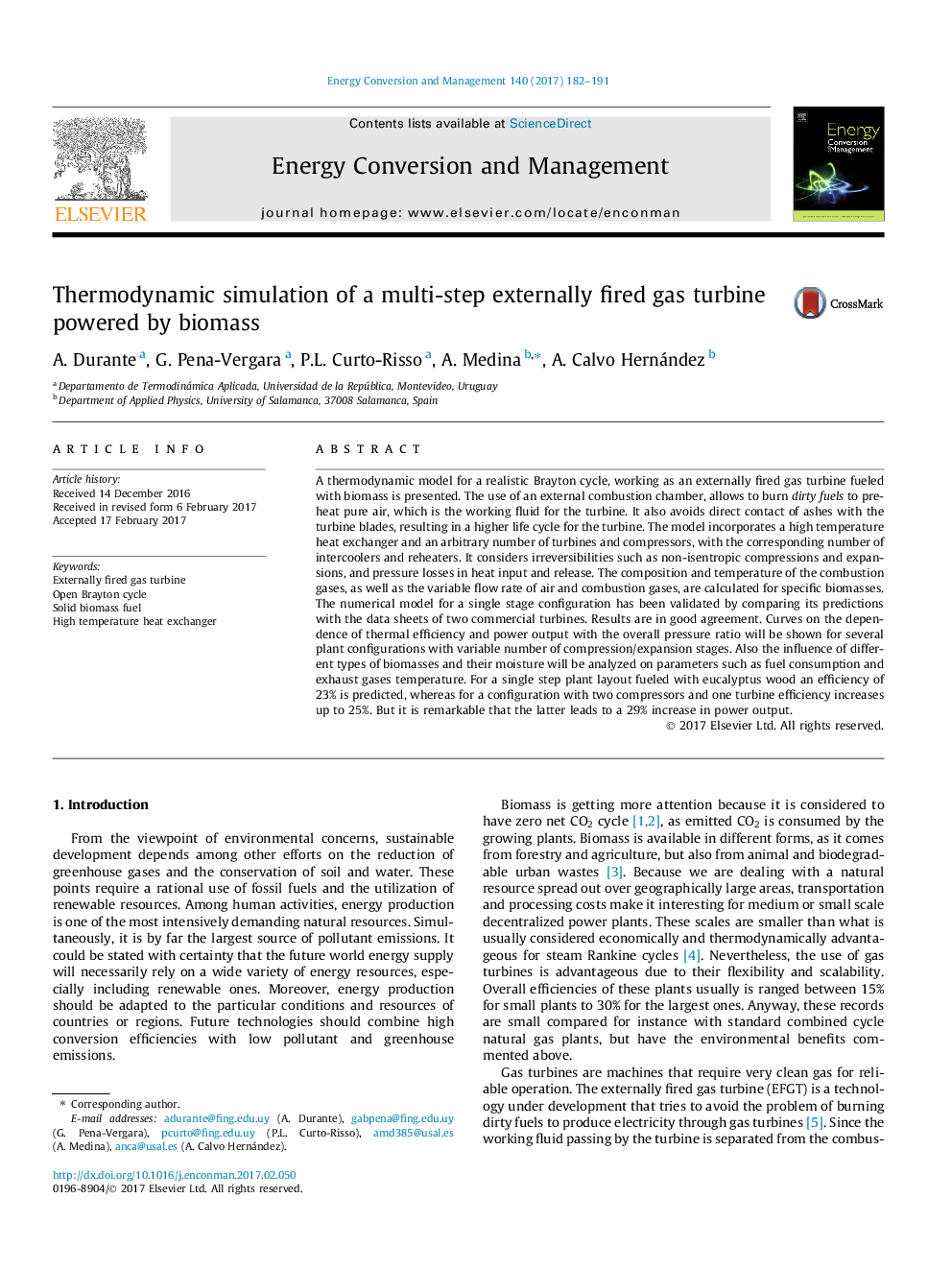| کد مقاله | کد نشریه | سال انتشار | مقاله انگلیسی | نسخه تمام متن |
|---|---|---|---|---|
| 5012870 | 1462822 | 2017 | 10 صفحه PDF | دانلود رایگان |
عنوان انگلیسی مقاله ISI
Thermodynamic simulation of a multi-step externally fired gas turbine powered by biomass
ترجمه فارسی عنوان
شبیه سازی ترمودینامیکی چند گام توربین گاز خارجی که توسط زیست توده ساخته شده است
دانلود مقاله + سفارش ترجمه
دانلود مقاله ISI انگلیسی
رایگان برای ایرانیان
کلمات کلیدی
توربین گازی خارج از محفظه، باز کردن چرخه بریتون، سوخت جامد سوخت زیستی، مبدل حرارتی با درجه حرارت بالا،
موضوعات مرتبط
مهندسی و علوم پایه
مهندسی انرژی
انرژی (عمومی)
چکیده انگلیسی
A thermodynamic model for a realistic Brayton cycle, working as an externally fired gas turbine fueled with biomass is presented. The use of an external combustion chamber, allows to burn dirty fuels to preheat pure air, which is the working fluid for the turbine. It also avoids direct contact of ashes with the turbine blades, resulting in a higher life cycle for the turbine. The model incorporates a high temperature heat exchanger and an arbitrary number of turbines and compressors, with the corresponding number of intercoolers and reheaters. It considers irreversibilities such as non-isentropic compressions and expansions, and pressure losses in heat input and release. The composition and temperature of the combustion gases, as well as the variable flow rate of air and combustion gases, are calculated for specific biomasses. The numerical model for a single stage configuration has been validated by comparing its predictions with the data sheets of two commercial turbines. Results are in good agreement. Curves on the dependence of thermal efficiency and power output with the overall pressure ratio will be shown for several plant configurations with variable number of compression/expansion stages. Also the influence of different types of biomasses and their moisture will be analyzed on parameters such as fuel consumption and exhaust gases temperature. For a single step plant layout fueled with eucalyptus wood an efficiency of 23% is predicted, whereas for a configuration with two compressors and one turbine efficiency increases up to 25%. But it is remarkable that the latter leads to a 29% increase in power output.
ناشر
Database: Elsevier - ScienceDirect (ساینس دایرکت)
Journal: Energy Conversion and Management - Volume 140, 15 May 2017, Pages 182-191
Journal: Energy Conversion and Management - Volume 140, 15 May 2017, Pages 182-191
نویسندگان
A. Durante, G. Pena-Vergara, P.L. Curto-Risso, A. Medina, A. Calvo Hernández,
